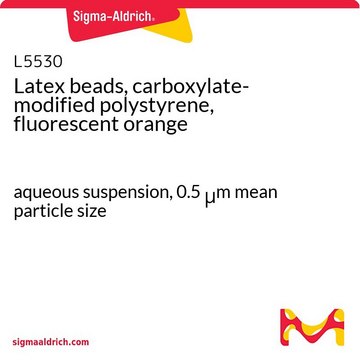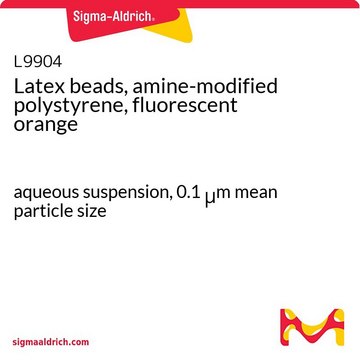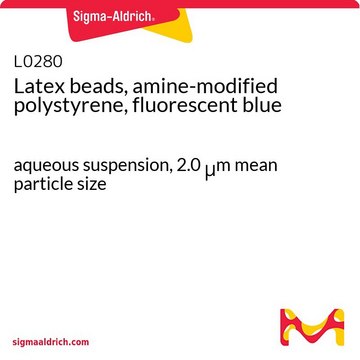LB3
Latex beads, polystyrene
0.3 μm mean particle size
Synonym(s):
Latex Microspheres, Polystyrene Beads, Polystyrene Latex Particles
About This Item
Recommended Products
form
aqueous suspension
composition
Solids, 10%
packaging
pack of 1 mL
pack of 15 mL
pack of 2 mL
mean particle size
0.3 μm
Looking for similar products? Visit Product Comparison Guide
General description
Application
- in latex particle recovery and size distribution studies
- as a component of the colloidal suspensions for light extinction spectroscopy
- in the quantification of microvesicles by high-sensitivity flow cytometry
Storage Class Code
10 - Combustible liquids
WGK
WGK 3
Flash Point(F)
Not applicable
Flash Point(C)
Not applicable
Regulatory Listings
Regulatory Listings are mainly provided for chemical products. Only limited information can be provided here for non-chemical products. No entry means none of the components are listed. It is the user’s obligation to ensure the safe and legal use of the product.
JAN Code
LB3-15ML:
LB3-1ML:
LB3-BULK:
LB3-2ML:
LB3-VAR:
Certificates of Analysis (COA)
Search for Certificates of Analysis (COA) by entering the products Lot/Batch Number. Lot and Batch Numbers can be found on a product’s label following the words ‘Lot’ or ‘Batch’.
Already Own This Product?
Find documentation for the products that you have recently purchased in the Document Library.
Customers Also Viewed
Our team of scientists has experience in all areas of research including Life Science, Material Science, Chemical Synthesis, Chromatography, Analytical and many others.
Contact Technical Service








